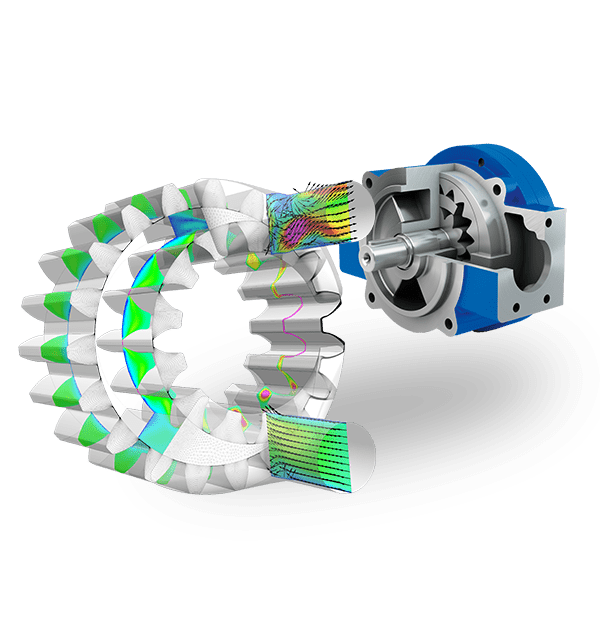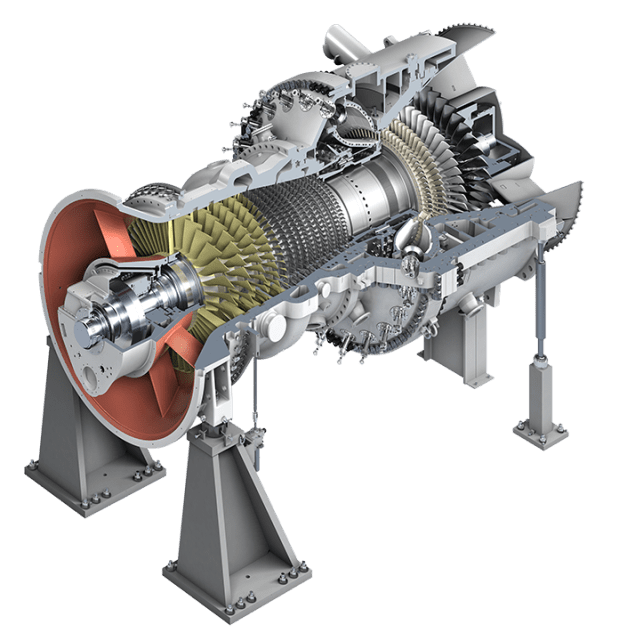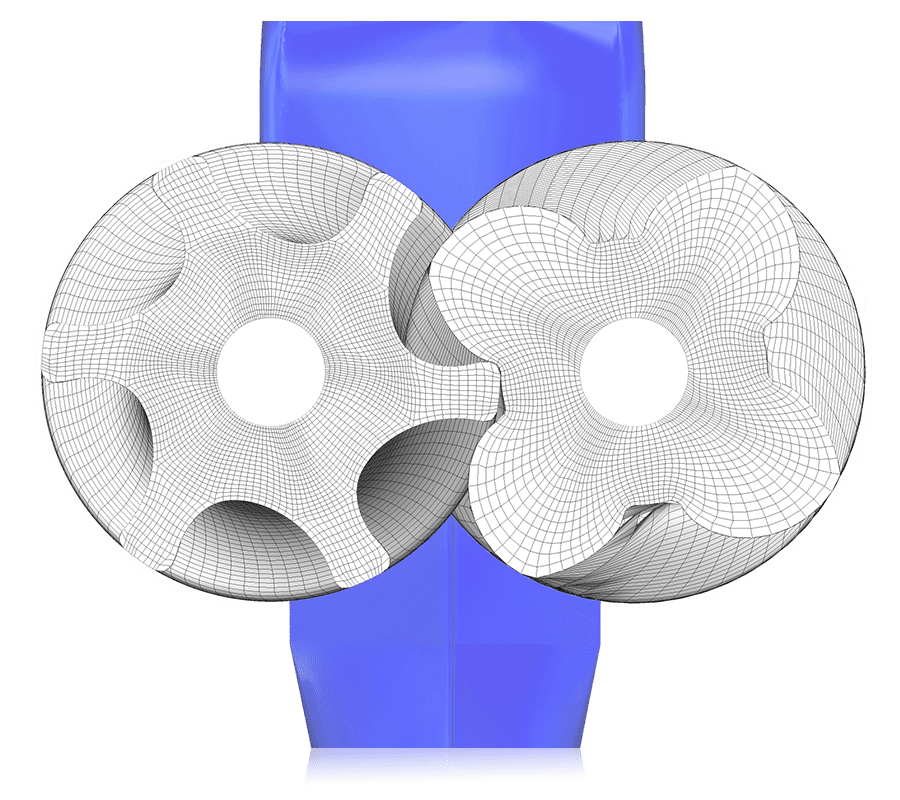Ansys Blademodeler
Ansys Blademodeler is a powerful, yet intuitive blade modeling software, with cross-industry utility.
Ansys Blademodeler is a powerful, yet intuitive blade modeling software, with cross-industry utility.
Ansys Blademodeler empowers engineers through all phases of the design stage and renders superior versatility – accommodating all varieties of rotating machinery. The software delivers complete 3D geometry modeling control and even allows for non-bladed equipment to be imported from other CAD software (and all major CAD vendors are compatible).

Start with a few of your own defined parameters (pressure ratio, mass flow rotational speed, gas properties, geometric constraints) and the software will calculate a 3-D blade geometry and calculates aerodynamic performance parameters. Additionally, tt will also provide you with a meridional view of the impeller.
Centrifugal compressors and pumps are universally used in a range of industrial applications like refrigeration and air conditioning, turbo-machinery, power generation, and turbochargers. Yet, while a compressor can be designed with a specific operating condition in mind, it is often imperative to run the compressor over a wide flow range. As a result, off-design performance and efficiency are often an essential consideration.
The mass flow rate, and subsequently the pressure change across the compressor, can be maintained by adjusting the rotational velocity of the impellers. Yet, this may not be efficient, especially if frequent adjustments are needed. An alternative approach is the application of Inlet Guide Vanes (IGVs). However, a positive vane angle generates preswirl in the direction of impeller rotation. Therefore, diminishing compressor work at a provided revolutions-per-minute (RPM). This is why accurate Blade Modeling Software is so essential for engineers.





Ansys’ most powerful computational fluid dynamics tool, Fluent, includes well-validated physical modeling capabilities to deliver fast, accurate results across the widest range of CFD and multiphysics applications.
Ansys CFX is a high-performance computational fluid dynamics tool that delivers reliable and accurate solutions quickly for a wide range of applications, including leading capabilities for rotating machinery.
Ansys EnSight is the market leader for data visualization. Its post-processing tool includes models with more than hundreds of millions of cells, providing engineers with insights unavailable elsewhere.
Ansys Polyflow provides advanced fluid dynamics technology for companies in the polymer, glass, metals, and cement processing industries.
Ansys Chemkin-Pro is the gold standard for modeling and simulating complex gas phase and surface chemistry reactions for fast, accurate development of combustion systems.
Ansys TurboGrid complements rotating machinery simulation with a specialized, easy-to-use tool for the rapid 3D design of rotating machinery components.
Ansys Forte accurately simulates IC engine combustion performance with nearly any fuel, helping engineers rapidly design cleaner burning, high-efficiency, fuel-flexible engines.
Ansys Vista TF complements rotating machinery simulation by enabling engineers to quickly develop blade geometries that achieve desired performance objectives.
Ansys BladeModeler complements rotating machinery simulation with a specialized, easy-to-use tool for the rapid 3D design of rotating machinery components.
Mosaic Mesh, a Hexahedral Dominant Mesh Software accelerates the meshing process with a reduced face count, higher quality cells and efficient parallel scalability.
FENSAP-ICE is the premier in-flight icing simulation system. Its innovative, graphical environment provides intuitive file management and makes it easy to interact between simulation modules.
Fluent meshing provides automation to highly crafted meshing. Methods available cover the meshing spectrum of high-order linear elements to tetrahedral and polyhedral analysis.
To benefit from all the computational fluid dynamic solvers that Ansys offers, choose the CFD Enterprise toolkit. CFD Enterprise offers full versions of Ansys Fluent, AIM Pro, and CFX to help you optimize product performance with well-validated physical modeling capabilities that deliver quick, accurate results.
Engineers use Ansys CFX for the most accurate, robust, and rapid simulation for rotating machinery such as fans, pumps, compressors, and gas and hydraulic turbines. Companies in the glass, metals, polymer, and cement industries can choose Ansys Polyflow for advanced fluid dynamics technology.
Today’s experienced engineers need well-validated CFD results to analyze products quickly and thoroughly. With full versions of Ansys Fluent, CFX, and SpaceClaim included, CFD Premium provides accurate, quick, and robust results.
Engineers can simulate IC engine combustion performance with Ansys Forte. Simulate with nearly any type of fuel to quickly design high-efficiency, clean-burning engines that are fuel flexible. To ensure speed and safety for in-flight icing certification, Ansys FENSAP-ICE provides accurate, rapid aircraft icing assessments, along with other comprehensive analysis in the aerospace industry.